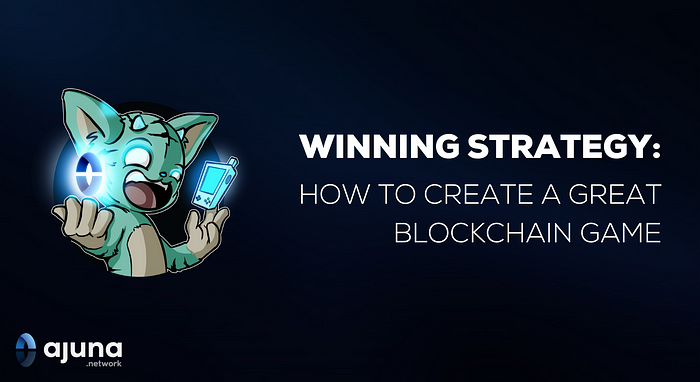Winning Strategy: How to create a great blockchain game
Decentralized gaming has so much to offer, but how can it reach its full potential? Here’s what developers need to prioritize in game design.

The problem facing Web3 games has changed. The challenge is no longer how to convince developers of the benefits they can reap from blockchain technology, but how to use that tech in a way that really delivers the promised rewards. In particular, keeping in mind the very public failures already seen in this rapidly evolving sector, how can we build decentralized games that will win audiences for the long term?
It’s actually not that complicated. The point is to focus on the game, and leverage blockchain in the supporting role it is designed for, not the starring role. Hacks and tumbling token values have brought all the wrong kinds of attention, but most gamers aren’t in it for the money anyway.
- Put fun first
Blockchain games have developed a bad reputation among mainstream players because they think it’s all about NFTs, and more specifically, about play-to-earn. The sector’s most famous titles are still CryptoKitties and Axie Infinity — both of which have seen rather painful falls from grace. In both cases, the problems were written in from the start. The draw was always financial gain, which by nature isn’t sustainable. For game developers, this is lesson one: the game has to be fun to play on its own merits, even with no cash value attached.
Axie was the flagship NFT play-to-earn game, drawing players who were eager to find an income source more than a hobby. One of those described his days grinding for Axies as “boring and stressful” — hardly the experience gamers are looking for. In fact, most gamers aren’t looking for earnings at all.
That’s evident in the numbers. Gaming is the sector least affected by this year’s crypto bloodbath — in fact, game activity is still climbing. That shows that players are not motivated by earnings; if they were, you’d expect activity to move in line with the wider market. As GameFi matures, games are focusing more on excitement and varied gameplay; even Sky Mavis has taken this on board, launching the new Axie Infinity: Origin with a heavier emphasis on an adventure (rather than breeding) and the opportunity to play with free, non-breeding starter Axies.
- Use NFTs the right way
Despite the P2E collapse and the backlash to poorly thought out NFT ventures from mainstream studios, gaming is still the best use case for this technology. Even as Sony insists it is “definitely not [using] NFTs”, it recognizes the value of digital collectibles. As crypto moves into the mainstream (and we expect gaming to be a big driver of that shift), the NFT stigma will fade and only the real benefits will remain.
Those benefits are undeniable. Collectible, tradable assets aren’t just a great way for games to reward players, or for players to recoup some of their investment (a bit like they used to do selling their used games). Items have long been there to increase the thrill of adventure and discovery. Now, NFTs can make game items more real, deepening the sense of immersion in a fantasy world and increasing player commitment.
Lesson two: don’t go for an NFT cash grab or build a game only on trading, but don’t ditch NFTs either. Use them to underpin the value of the game’s intrinsic reward.
- Don’t compromise
There is an opportunity for gamefi to show the power of decentralized networks, but for a game to break out of the crypto niche, it will have to win over audiences who have no vested interest. Make onboarding easy and make the game compelling. Forget whether your game is more fun than Splinterlands, is it more fun than Call of Duty?
There is a good reason blockchain games started out focusing on simple turn-based strategy and collectibles. Decentralized networks just couldn’t cope with fast or complex gameplay. But with the tech evolving fast, game designers need to think bigger. Ajuna’s platform is designed to help developers level up, removing barriers to creative and exciting games. We’re slashing latency and integrating the industry’s most familiar, powerful game engines to ensure that developers don’t have to worry about solving blockchain’s problems — just making great games.
Lesson three: you’re competing against the entire games market. With all those options out there, you need to make sure that your players don’t have to put up with poor performance.
That’s what we’re here for
The success factors are clear. Exciting games that harness blockchain to reward players, but don’t let it hold them back, can win over mass audiences. And Ajuna is here to help. We integrate the Unreal and Unity engines, so you can focus on creating a great game without having to learn blockchain. We make it easy to add NFTs to any game. And we are slashing latency so that you don’t have to worry about network limitations. We’re building the future of gaming — are you in?

